Video of the Week:
Mulch: Trees Need to Breathe
Upcoming Events:
July 30 K-State Research & Extension Center Horticulture Field Day, Olathe http://www.johnson.k-state.edu/lawn-garden/horticulture-field-day.html
August 4 Kansas Turfgrass Field Day, Manhattan https://turffieldday.eventbrite.com
Turfgrass:
Bermudagrass Control
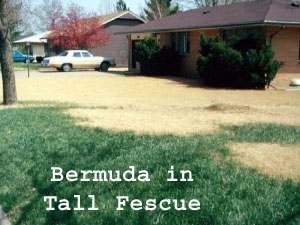
Bermuda that invades a cool-season lawn will be brown during much of the spring and fall while the tall fescue portion of the lawn is green. Bermuda is much more drought and heat resistant than cool-season grasses, so it will take over a cool-season lawn during the summer months if it is in full sun.
So, how do you control bermudagrass that has invaded a cool-season lawn? Research conducted in 1996 showed that glyphosate (Round-up, Kleen-up, Killzall, Kleeraway) is the best herbicide for the job. Glyphosate is a nonselective herbicide and will kill everything— including tall fescue or Kentucky bluegrass. Therefore, you will need to reseed treated areas. In our study, we applied a 2% solution of glyphosate on July 15 and again on August 15 on a bermudagrass plot that was more than 15 years old. More than one year later, we saw no regrowth. Glyphosate works best if bermuda is growing well. The better the bermudagrass is growing, the more chemical is taken up and pushed into the roots. Water and fertilize if needed to get it going.
Spray about the middle of July (or when the bermuda is growing well). Use glyphosate (2% solution). Wait two weeks and scalp the lawn (mow as low as possible and remove clippings.) This will prevent dead grass from covering any bermuda that starts to recover. Wait another two weeks and spray again with glyphosate if there is any green. Wait two more weeks and reseed. (Ward Upham)
Fruit:
Prop Up Fruit Tree Limbs if Needed

Here's how. Cut a "V" on the top edge of the board on which the limb will rest so that it doesn't slip off. Long limbs that are heavily loaded with fruit may need a prop in the center and another to support the outer part of the limb. A plastic belt-like material that is about 2 inches wide may also be used. This can be tied to a heavily loaded limb, then to a large diameter limb above for support. Where a large limb is used for support, it is good to have it supporting limbs on opposite sides so the weight is balanced.
Another solution is to wrap a tape or belt material around the tree in a spiral to prevent limbs from bending until they break. Heavy twine may be used, but it should be removed when the fruit is picked or soon after so it does not cut into the bark on the limb.
Check trees regularly, up to two times a week during the last month the fruit are maturing. You will find additional limbs that need support. Tending to the heavily loaded tree limbs will reduce the number of broken limbs and help keep a balance of the fruiting wood in your tree. Next year, prune long, weak branches back to a side branch to help prevent this problem. (Ward Upham)
Ornamentals:
Summer Branch Drop
This type of damage has been reported on both landscape and forest trees. The landscape trees were found in irrigated and unirrigated situations.
These limbs can be huge; up to 3 feet in diameter. Most often the break occurs 3 to 12 feet from where the branch attaches though at times the branch may break at the attachment. Though breaks do occur in decayed wood, often the broken branch shows no sign of weakness or decay.
No firm explanation of a cause has been established though buildup of pressure within the branch has been noted. In some cases, the branch seems to explode and then drop. The reason for this pressure buildup is unclear though several ideas have been put forth.
Certain species are more susceptible to this condition including oaks, poplars, cottonwood, willows, ash, sycamore and Japanese Pagodatree. You will find more detail in Richard Harris’ article at http://artistictreeworks.com/harris.html
Be cautious around these trees during hot, calm weather. Hopefully, the cooler weather we had last week will reduce the changes of this happening. (Ward Upham)
Pests:
Hornworms on Tomatoes
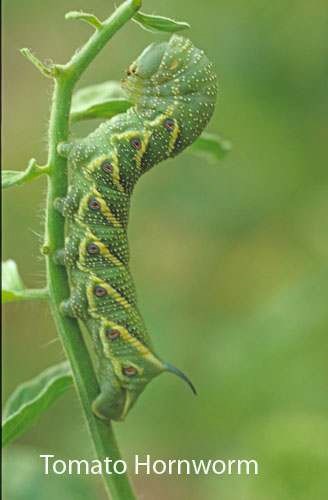
The larval stage of this insect is a 3 ½- to 4-inch long pale green caterpillar with five pair of prolegs and a horn on the last segment. The two most common hornworms are the tobacco hornworm (seven diagonal white stripes and, most commonly, a red horn) and the tomato hornworm (v-shaped markings with a horn that is often blue or black).
The adult of the tobacco hornworm is the Carolina sphinx moth. The five-spotted hawk moth is the adult of the tomato hornworm. Both moths are stout-bodied, grayish-colored insects with a wing spread of 4 to 5 inches.
The larva is the damaging stage and feeds on the leaves and stems of the tomato plant, leaving behind dark green or black droppings. Though initially quite small with a body about the same size as its horn, these insects pass through four or five larval stages to reach full size in about a month. The coloration of this larva causes it to blend in with its surroundings and is often difficult to see despite its large size. It eventually will burrow into the soil to pupate. There are two generations a year.
This insect is parasitized by a number of insects. One of the most common is a small braconid wasp. Larva that hatch from wasp eggs laid on the hornworm feed on the inside of the hornworm until the wasp is ready to pupate. The cocoons appear as white projections protruding from the hornworm's body. If such projections are seen, leave the infected hornworms in the garden. The wasps will kill the hornworms when they emerge from the cocoons and will seek out other hornworms to parasitize.
Handpicking is an effective control in small gardens. Bt (Dipel, Thuricide), spinosad (Conserve; Borer, Bagworm, Leafminer & Tent Caterpillar Spray; Colorado Potato Beetle Beater Conc; Captain Jack's Dead Bug Brew, Monterey Garden Insect Spray), cyfluthrin (Bayer Vegetable & Garden Insect Spray) and other insecticides may also be used to control hornworms. (Ward Upham)
Walnut Caterpillars
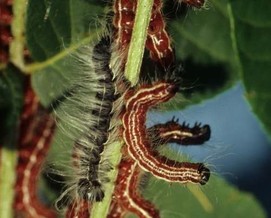
Walnut caterpillars overwinter as pupae underground beneath host trees. In late spring, moths emerge and deposit egg clusters on lower leaves. By the end of June, newly emerged and gregarious larvae skeletonize leaves. Larger hairy, brick-red larvae consume greater amounts of leaf tissue, and nearly matured gray larvae devour entire leaves, including petioles.
As mentioned earlier, walnut caterpillars are gregarious. In other words, they feed in groups. A single tree may contain several groups. When disturbed, larvae arch their bodies in what looks like a defensive move. Larvae crowd together on the lower parts of trees to molt and leave an ugly patch of hairy skins. Mature larvae, 2 inches long, descend or drop to the ground where they enter the soil to pupate. A second generation occurs soon, creating the overwintering pupae.
Removing leaves with egg masses is an effective way to control walnut caterpillars. This may be impractical with large trees or when too many infested leaves are present. Bands of Tree Tanglefoot pest barrier may be used to snare larvae as they migrate to main branches or the trunk to molt. Insecticides such as spinosad (Conserve; Captain Jack’s Dead Bug Brew; Borer, Bagworm, Leafminer and Tent Caterpillar Spray) permethrin (numerous trade names) malathion or cyfluthrin (Tempo, Bayer Vegetable and Garden Insect Spray) may provide the most practical means of control. (Ward Upham)
Squash Bug Control
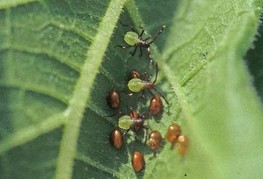
Life Stage Most Effective Moderately Effective Least Effective
Young Nymphs Spinosad Carbaryl Garlic
Pyrethrins Neem Oil
Permethrin
Old Nymphs Spinosad Permethrin Pyrethrins
Carbaryl
Adults Cyhalothrin Esfenvalerate Spinosad
Cyfluthrin Permethrin
Pyrethrins Carbaryl
Carbaryl - Sevin
Cyfluthrin - Bayer Vegetable & Garden Insect Spray
Esfenvalerate - Monterey Bug Buster II
Cyhalothrin - Bonide Beetle Killer; Spectracide Triazicide
Permethrin - Bonide Eight Garden Dust; Bayer Complete Insect Dust; Hi-Yield Garden, Pet & Livestock Dust
Pyrethrins - Monterey Bug Buster-O; Fertilome Quik-Kill Home, Garden & Pet Spray
Spinosad - Fertilome Borer, Bagworm, Leafminer & Tent Caterpillar Spray; Bonide Captain Jack’s Dead Bug Brew; Bonide Colorado Potato Beetle Beater
To see the complete study, go to http://entomology.osu.edu/welty/pdf/VegIPMReport2005.pdf (Ward Upham)
Contributors: Ward Upham, Extension Associate
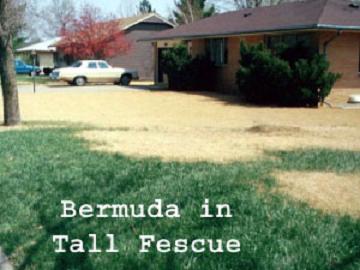
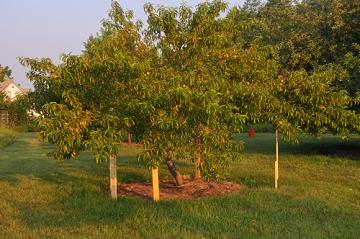
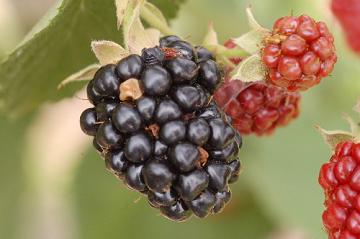
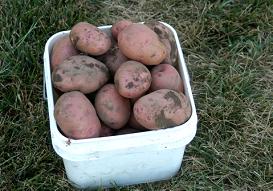
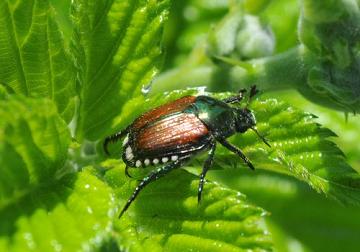
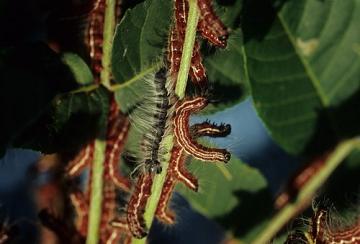
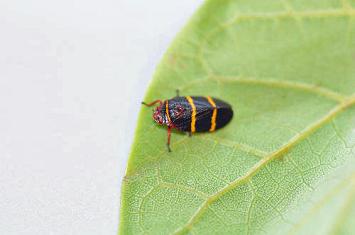
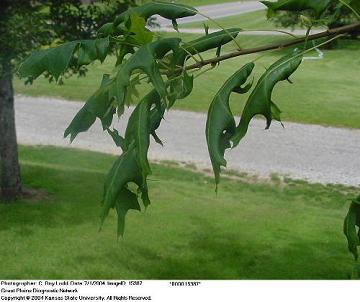
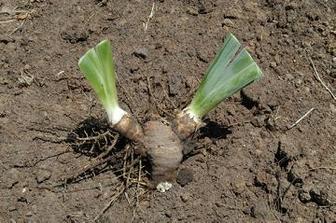
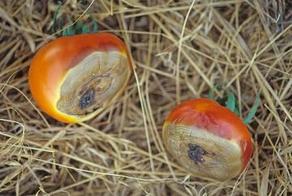
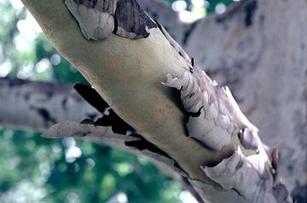
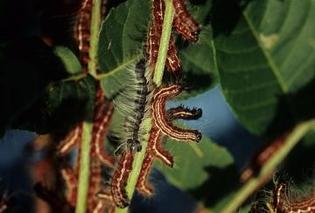
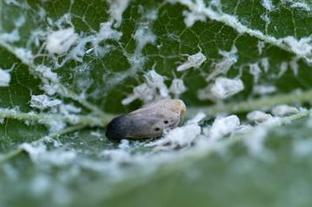
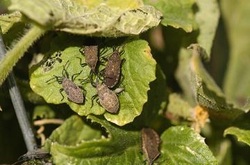

 RSS Feed
RSS Feed
